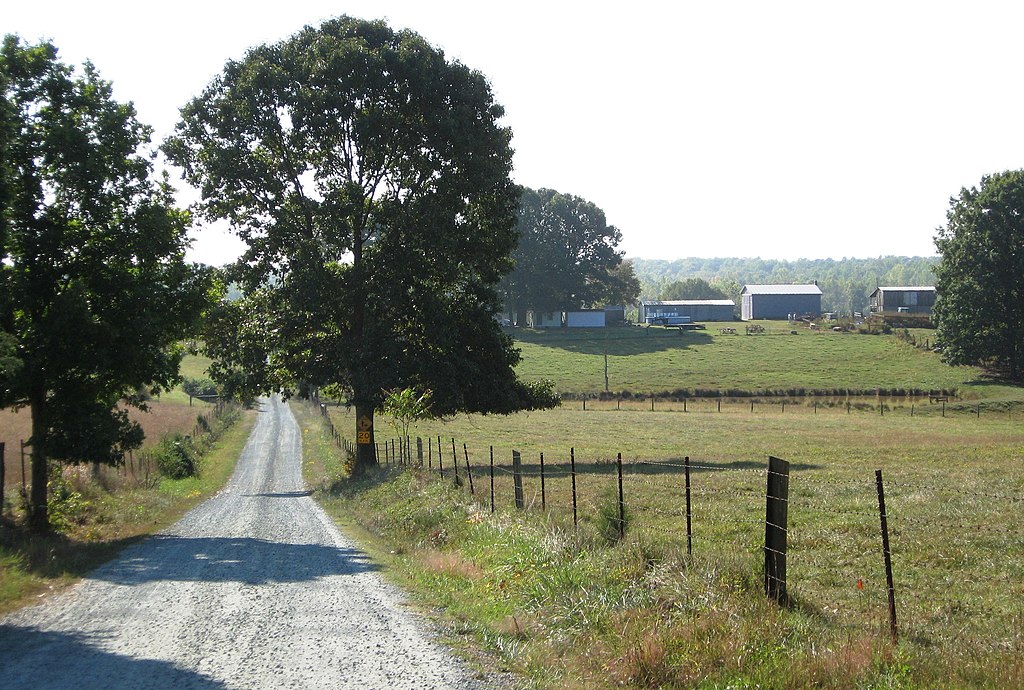Saving the New River
September marks a special anniversary for the New River Valley and for environmental protection in Appalachia. Thirty years ago, in 1976, President Ford signed a bill to protect and preserve the upper New River. The bill designated 26.5 miles of the waterway as a National Wild and Scenic River, shielding that section of the world’s second-oldest river from impoundment by one of the largest power companies in the United States. The Appalachian Power Company, an operating company of the American Electric Power Company, fought for over ten years for the right to construct a massive, two-reservoir pumped-storage hydroelectric facility stretching from Grayson County, Virginia, into the North Carolina counties of Ashe and Alleghany. They called it the Blue Ridge Project. Both dams would have been the largest impounding structures on the New River. The height of only the upper dam (300 feet) would have been higher than the combined height of Bluestone Dam (165 feet) and Claytor Dam (130 feet), the largest impoundments on the river to date.
The Blue Ridge Project would have flooded 27,900 acres of river bottom farmland in Grayson County, 5,800 acres in Alleghany County, and 8,400 acres in Ashe County. The finished project would have forced the destruction or relocation of 893 homes, hundreds of family farms, hundreds of archaeological sites, forty-one summer cabins, ten industrial employers, five post offices, fifteen churches, twelve cemeteries, and an estimated 2,700 people. Entire towns, such as Mouth of Wilson, Virginia, would be hundreds of feet under water.
The reservoirs would create a yearly loss of 13,500,000 dollars in crop and livestock sales. Appalachian Power offered to replace the robust local economy with a 5,000,000-dollar annual payroll at the dams and recreational facilities surrounding the reservoirs, a figure that accounted for less than half of the region’s previous annual income. Historically, the Appalachian Power Company’s energy developments along the New River proceeded virtually unchallenged, except for some legal conflicts with the federal government. The Buck and Byllesby Dams, Claytor Dam, and the Glen Lyn Steam plant are all examples of the private utility’s previous developments along the banks of the New.
The Blue Ridge Project was never constructed. However, there were many times when it seemed like nothing could stop the Appalachian Power Company. Due to the hard work and persistence of local river advocates, national environmental groups, environmental attorneys, and the average New River Valley resident, the river was spared from another impoundment. Without their resistance, organization, lobbying, political connections, and perhaps most importantly, their knowledge of newly created environmental legislation, there is no doubt that reservoir construction would have proceeded unchallenged. The victory over Appalachian Power is truly remarkable, since project opponents defeated a hydroelectric project and a powerful, politically connected utility company during the worldwide energy shortage of the mid-1970s.
If the reservoirs were built, what would the upper New River Valley look like now? During the project planning, everyone accepted that recreation would be impossible on the smaller lower reservoir. Forty-foot drawdowns necessary for power generation would leave a ring of mudflats for half-a-mile around the lake’s edge. To make recreation on the lakes a possibility at all, drawdowns on the larger upper reservoir were limited to a twelve-foot maximum by a Federal Power Commission judge. Dam opponents also knew that silt accumulation would drastically affect the efficiency of the dams in twenty years, and make them useless in fifty years.
For a comparison, we only have to look at nearby Smith Mountain Lake. Appalachian Power built this reservoir on the Roanoke River in the early 1960s, only a few years before the New River controversy began. Smith Mountain Lake’s shorelines are now filling in with eroded mud and the complaints of lakeside residents are falling on the deaf ears of Appalachian Power Company officials. The shoreline of the Blue Ridge Project reservoirs would now be doing a very similar thing and in twenty more years, the dams would be useless structures that contain stinking mud flats behind their walls, keeping this manmade filth out of the crystal-clear waters of the lower New River if possible.
Perhaps the most ironic part of the controversy is that the promised recreational benefits to be facilitated by the new lakes appeared anyway along the banks of the free-flowing river. The attention and exposure that the upper New River received during the battle against the Blue Ridge Project has made its entire 330-mile length a popular canoeing, kayaking, tubing, fishing, and whitewater rafting destination that is visited by people from every corner of the globe. Had the reservoirs been constructed, recreation possibilities on the upper lake would become more and more limited as it filled with sediment. The banks of the ancient river, though they may shift after a flood and change gradually due to erosion, are far more permanent venues for recreation than the shore of a shrinking man made lake. The victory over Appalachian Power also generated a powerful environmental awareness about the entire New River. It led to the establishment of the New River Gorge National Park in 1978, and today federal management agencies control all but two miles of land along the river in West Virginia.
Today we face another worldwide energy crisis and new environmental challenges. In the upper New River Valley, reckless vacation home development and dangerous chemicals sprayed on Christmas tree fields threaten river health. In Virginia, the river’s water quality is tainted by PCBs, chemicals used by regional manufacturing plants as early as 1931. Though outlawed in 1977, a large amount had already settled and attached itself to the river floor. Fish ingest PCBs with their food, which makes many of the river’s aquatic species cancer-causing, inedible creatures. Recently, plans for gas wells and gas lines have begun to appear in the entire New River watershed, especially in West Virginia. Today river advocates are fighting Duke Energy’s proposed power plant on the river near Foster Falls in Virginia, a pipeline that will cross the river in the New River Trail State Park, and subdivision development along the New River Gorge.
Despite these present-day issues, the New River is still a relatively clean waterway, especially when compared to other east coast rivers. It provides us with drinking water, an enduring link to the past, countless recreation activities, and spectacular scenery.
The environmental victory broke new ground 30 years ago. In an age when power companies nearly always got their way, the demise of APCO’s project showed that the utilities could be made to yield to public opinion.
For me, personally knowing, loving, and watching the New River closely is one of the best ways to protect it.
R. Seth Woodard recently completed a history master’s thesis at Virginia Tech on the Appalachian Power Company’s relationship to the New River. Thanks also to Thomas Shoenbaum, whose 1978 book, The New River Controversy, kept the memory of the fight alive .
Related Articles
Latest News
More Stories

Leave a comment
Your email address will not be published. Required fields are marked *





Leave a Comment